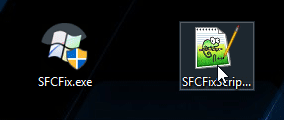Hello,
I'm experiencing serious integrity issues on a Windows Server 2008 R2 machine.
- `CheckSUR` and `sfc /scannow` both fail to repair system files.
There was a problem with the computer I used as a server, so I used various programs and modified the registry, and the problem persisted and I came here.
Some files have been recovered when 'CheckSUR' and 'sfc/scannow' are currently used. However, an error message says that a damaged file exists but cannot be recovered.
System files are damaged, so the site can be operated, but mail systems, schedule systems, and log records cannot be used.
Can I get some help?
I've attached the results of the ComponentScanner for your review.
Please take a look when you have a chance.
Let me know if you need anything else from my side.
Thanks in advance!
**Attached Logs:**
- CheckSUR.log
- CheckSUR.persist.log
- CBS.log / part
- FRST.txt
- Addition.txt
- ComponentsScanner
I'm experiencing serious integrity issues on a Windows Server 2008 R2 machine.
- `CheckSUR` and `sfc /scannow` both fail to repair system files.
There was a problem with the computer I used as a server, so I used various programs and modified the registry, and the problem persisted and I came here.
Some files have been recovered when 'CheckSUR' and 'sfc/scannow' are currently used. However, an error message says that a damaged file exists but cannot be recovered.
System files are damaged, so the site can be operated, but mail systems, schedule systems, and log records cannot be used.
Can I get some help?
I've attached the results of the ComponentScanner for your review.
Please take a look when you have a chance.
Let me know if you need anything else from my side.
Thanks in advance!
**Attached Logs:**
- CheckSUR.log
- CheckSUR.persist.log
- CBS.log / part
- FRST.txt
- Addition.txt
- ComponentsScanner


